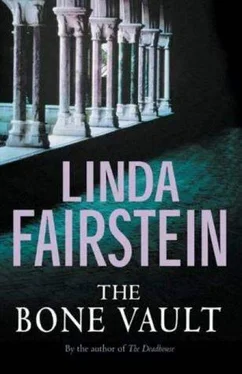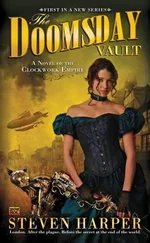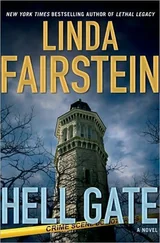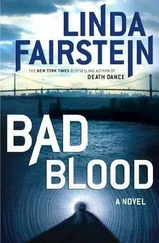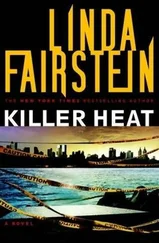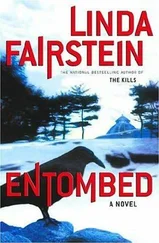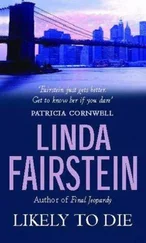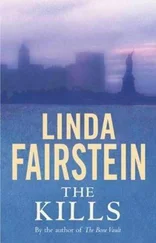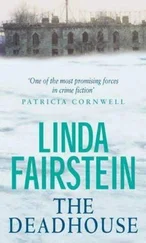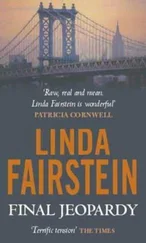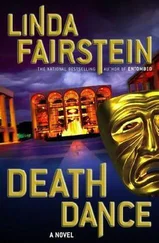“I’m surprised he’d want to be there.”
“I’m sure he thought it was great fun. He had no idea he was being studied. Whenever Peary came back with specimens, over the years, whether it was an Arctic owl or native costumes and weapons, Mene could explain them to the staff. He was actually a favorite of many of the workers. Until the day he made a dreadful discovery.”
“In the museum?”
“Yes. I guess he was almost eighteen at the time. By then, Mene was allowed to walk through the great halls of the museum, studying the exhibits he had never been permitted to see before.”
Clem stood and put both hands up to her mouth, then spread them in front of her.
“He wandered around rooms filled with beasts and animals he had never imagined existed, seeing African habitats and South Seas tropical island lizards and fish, most of which weren’t even pictured in his books at school in 1906.”
I wanted to hear that the mark Mene had left at the head of his father’s grave had worked to protect him, that he wasn’t haunted by that restless spirit for the remainder of his life.
Clem had one hand out straight in front of her, the other folded over her heart. “And then he reached Room Three, which must have made him nostalgic for his home. There was an array of kayaks, sleds being led by their stuffed hunting dogs, primitive paraphernalia from Peary’s voyages, and finally-a large cabinet that was labeled ‘Exhibit Number Five. Polar Eskimo named Qisuk.’”
Imagine the impact of the betrayal, the trauma experienced by the boy who thought his father had been treated like the legendary warriors of his homeland.
“Mene was face-to-face with his father’s skeleton, which had been mounted and hung in a glass display case in the museum.”
“The young man fell to his knees and wept.”
“How did something like that ever happen? How could they have deceived the child that way?”
Mike tried to break the tension. “He’s lucky they didn’t stuff his father.”
Clem’s glance was dead sober. “The way Mene told the story, he was never sure. Next to the hanging skeleton was a life cast of Qisuk.”
“What’s that?”
“The museum has an entire collection of them in the anthropology department. Workers would make molds, applying paraffin to the face of the dead person-sometimes to their entire bodies. Completely lifelike. Mene looked up and saw the melancholy face of his beloved father. He was sure they had skinned and preserved him, just like an animal.”
“He wasn’t right about that part, was he?” I asked.
“Try finding the records. See ifyou can get an honest accounting. Franz Boas, the great anthropologist, kept a diary-and mind you, he thought the whole charade was entirely appropriate. In his writings, he claims the museum officials staged the fake burial to placate the young child, so he wouldn’t think his father’s body had been picked apart by the scientists.”
“What was actually under the animal skins the night they pretended to bury Qisuk?”
“A log. A piece of wood the size of a man.”
“But surely-”
“If you think I’m making any of this up, Alex,” Clem said, patting a notebook that she had brought with her and placed on the small desk next to her glass, “there are newspaper clips that tell the whole story. The fight for Qisuk’s body-”
“Fight? Between whom?”
“He died at Bellevue Hospital. The doctors there wanted to autopsy him, but the museum wanted the same privilege.”
“Was there a winner?”
“An agreement was reached between the two institutions. The poor fellow was to be dissected at Bellevue, and then the museum would be allowed to preserve the skeleton. Famous phrenologists inspected his brain and took measurements of his skull.”
“Why the skull?”
“The idea was that the low cultural level of more primitive people was a factor in their receding foreheads. Not enough room for mental development. Just part of the racism intrinsic to the anthropological theories of the day.”
“So what’s to study?” Chapman asked.
“I hesitate to call the scientists bigots. After all, those were the Euro-American tenets of the nineteenth century. They were intrigued by the Eskimos, Mike. How did this nomadic, uneducated little tribe thrive in one of the earth’s most inhospitable climates? It was worthy of scientific study, don’t you think?”
Clem looked at Mercer, knowing he didn’t need this lecture on the narrow-mindedness that had been pervasive not just in society, but within the well-educated scientific community. “The world’s fair in St. Louis, 1904. Ever hear of it?”
“Judy Garland, Leon Ames, Mary Astor, Margaret O’Brien,” Mike snapped back. “Meet me in St. Louis, Louis. Zing, zing, zing went my heartstrings.”
“That’s the charming side. While Judy was finding romance on the trolley, Qisuk’s brain was one of the freakier exhibits. On loan from the museum.”
“And all this went on while Mene was growing up, but he knew nothing about it? That his father’s pickled brain was carted off to a world’s fair? Is it possible that Wallace participated in this cruel charade while the boy was living in his home?”
“You’ll never guess what Mene’s adoptive father was doing as a side business, at his farm upstate.”
“You’re way ahead of us.”
Clem sat on the arm of the sofa, flipping through yellowed clippings as she talked, showing me pictures of the young Mene with his adoptive family on the farm in Cold Spring.
“Have you ever heard of a macerating plant?”
None of us answered.
“It’s a bone bleacher.”
I shivered instinctively, thinking of what Zimm had described to us last week-one hundred years later-as the museum’s new degreasing machine.
“Back of the house was a running stream, so Mr. Wallace convinced the museum to let him set up his own operation there. A cheap way to clean the animal specimens. He just parked the dead carcasses in the running springwater until they were naturally washed and bleached.”
“And Qisuk?”
“Mr. Wallace was personally responsible for bleaching the Eskimo’s bones, so that the anthropologists could get on with mounting the skeleton. He did it in his own backyard, while Mene was living in the house and playing on the grounds of the old farm.”
“It’s unthinkable.”
“On top of that, William Wallace lost his job at the museum-nothing having to do with Qisuk’s phony funeral, which all the officials thought was fine-but because of financial irregularities. An early scam in which he was charging the museum for animal work he was doing for circuses and zoos. Billed the trustees for an elephant he had bleached for some circus troupe performing in the old Madison Square Garden.”
“So who supported Mene? The museum president? Or Robert Peary?”
Clem laughed. “Peary had long before given up his interest in his Eskimo specimens.”
“But the president of the museum, did he just abandon the child, too?”
“Pretty much so. Morris Jesup. He didn’t put his money where his mouth was either. When Jesup died, in 1908, his estate was valued at thirteen million dollars. He didn’t leave the child a nickel in his will.”
“What did the kid do?”
“Mene? He was still just a teenager, but he began the battle that would last him a lifetime.”
“Who did he fight?”
“The museum, its administration, its trustees.” Clem licked her finger and scanned through the plastic-covered sleeves in her notebook. When she found the newspaper article she had been searching for, she turned the book around so that the headline was facing me.
I read aloud from the January 6, 1907, edition ofThe World, which pictured an imploring Mene on his knees, in front of a sketch of the massive museum facade. Above the entrance was the bold black print that shouted his plea:GIVE ME MY FATHER’s BODY!
Читать дальше
